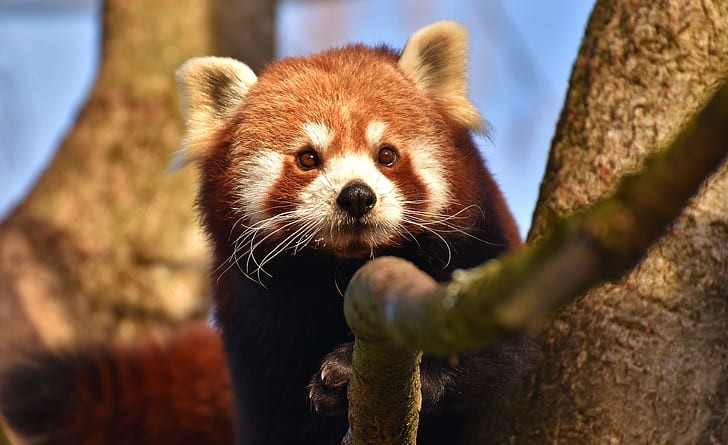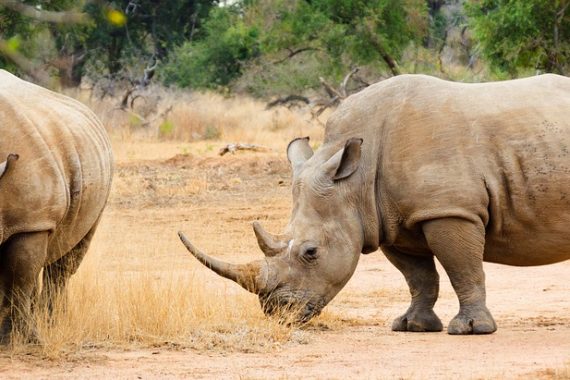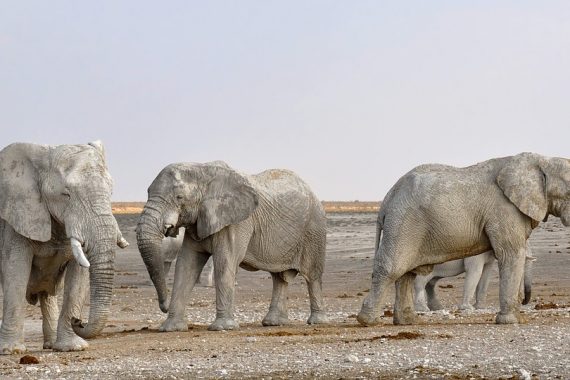 Once called the lesser panda, cat-bear, bear-cat, Himalayan raccoon, fox bear or firefox, this week we discuss everything Red Panda. These have to be one of the most adorable carnivores around. Much similar to the Giant Panda, Red Pandas have the bodies of meat eaters but survive on a diet of bamboo. Sadly, Red Pandas are classified as Endangered with possibly as little as 2500 animals left.
Once called the lesser panda, cat-bear, bear-cat, Himalayan raccoon, fox bear or firefox, this week we discuss everything Red Panda. These have to be one of the most adorable carnivores around. Much similar to the Giant Panda, Red Pandas have the bodies of meat eaters but survive on a diet of bamboo. Sadly, Red Pandas are classified as Endangered with possibly as little as 2500 animals left.
Red Panda History
At first glance, Red Pandas would appear to be distant relatives to Giant Pandas. Both are carnivores, both have pseudo-thumbs, and share many similar adaptations to eating mainly bamboo. Yet, DNA evidence has shown the Giant Panda and Red Panda are VERY distant relatives and actually not quite related. They have however evolved similar traits through convergent evolution and captured HERE. In fact, it is estimated they diverged nearly 43 million years ago. In fact, Red Pandas are actually closer to the Musteolidea family.
- The Musteloidea consists of the families Ailuridae(red pandas), Mustelidae(mustelids: weasels, otters, martens, and badgers), Procyonidae (procyonids: raccoons, coatis, kinkajous, olingos, olinguitos, ringtails and cacomistles), and Mephitidae (skunks and stink badgers).
Taken together, Red Pandas are actually a very unique species, a relic. They are the only remaining species of the Ailuridae family. There are two subspecies:
- the Himalayan red panda (A. fulgens) and the Chinese red panda (Ailurus styani)

Red Panda Facts
Red Pandas can live up to 23 years under human care and average about 8 years in the wild. The main predator of the Red Panda is the Snow Leopard. Red Pandas are obligate omnivores that eat mainly bamboo. However, they sometimes will eat other animals, birds, reptiles, insects, and even fruit. Similar to Giant Pandas, the low energy bamboo diet leads to less energy and these animals sleep much of the day. When not sleeping, they are often seen eating. Red pandas are primarily crepuscular — active at dawn or dusk — but they can be active any time of the day.
Red Panda Conservation
Red Pandas’ are Endangered. They are suffering from habitat loss, fragmentation, and degradation. Red panda population has plausibly declined by 50% over last three generations and this decline is continuing. Additionally, the illegal pet trade has reportedly been on the rise throughout Asia. However, poaching and the illegal trade of red panda pelts, meat and other products has decreased.
Conservation Tips this week involved travel. Here is the website mentioned in the podcast for the International Ecotourism Society

Organization







